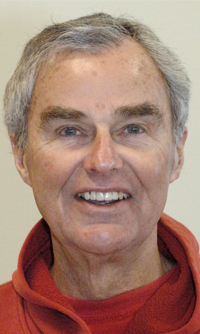"Anyone who can solve the problems of water will be worthy of two Nobel prizes—one for peace and one for science."
John F. Kennedy
For many different reasons, all people who live in snow country and many who do not pay close attention to details of each winter's snowpack. The most important reason in the short term, of course, is to know how skiing will be in the morning. The most significant, however, from a broader perspective is to know how much water will be available in the rivers and reservoirs of spring and summer. Whether spring runoff is a trickle, a benign wetness or a destructive flood depends on several factors, among them location, how fast the snowpack melts, when it melts, how full (or not) are key reservoirs at crucial times, the strength of levees and what progress and hubris has developed within historic floodplains. Big snow years, droughts, floods and other natural occurrences like forest fires, tsunamis and earthquakes are as natural, recurring and predictable as, well, big snow years, periods of drought, etc.
It was only a hundred years ago that the beginning of a reliable method of measuring the water content of a snowpack in order to estimate the size of the springtime runoff was developed. This was almost entirely through the efforts, ingenuity and imagination of one man—Dr. James Edward Church Jr., known as "Ward" to his friends. John Kennedy probably didn't know of Church, but Church certainly deserved prizes and praise in the realms of peace and science. He solved some of the problems of water.
Church was born in Michigan in 1869 and was a professor at the University of Nevada in Reno from 1899 until his retirement in 1939, teaching courses in Latin, German and the appreciation of literature and beauty in art and nature. The Church Fine Arts Building on the University of Nevada campus in Reno is named after him, and his and his wife's ashes are interred in its cornerstone.
One description of Church reads, "Quiet and unassuming, he was the essence of the Renaissance man, with his interests in science, the classics and art. Dr. Church died in Reno on Aug. 5, 1959, at the age of 90."
This accomplished Renaissance man became fascinated with the Sierra Nevada, particularly Mount Rose, which rises above Reno like a sentinel. In 1895, on a dare, he made the first known mid-winter ascent of the 10,776-foot peak. Church and his wife, Florence, made many winter ascents of Sierra peaks, including Whitney and Shasta, and they wrote about their adventures in the Sierra Club Bulletin. Though their backcountry gear was rustic and heavy by modern standards, it is reported that Florence lined their sleeping bag with rabbit furs.
His attraction to mountains was intellectual as well as adventurous, as befits a Renaissance man. In 1906, Church and Sam Doten of the University's Agricultural Experiment Station built by hand a weather observatory on the summit of Mount Rose, ferrying all material either by backpack or horseback. The observatory recorded data on snow deposits, wind velocities and runoff, and its remnants are still in place. Church developed the Mount Rose snow sampler, a hollow metal tube with a serrated collar that removed a core of the snowpack, which could then be weighed to calculate water content.
Church developed the first system for accurately comparing snow and water content against the subsequent flow of streams in the Lake Tahoe area, which allowed people to forecast water availability and to plan accordingly, in the case of Tahoe by knowing how much water to let into the Truckee River at what time of the year. This system became known as the percentage or Nevada system and became the standard one used in the West. It is in use today throughout the world.
Though Church was a fine professor and popular with students, he was world famous because of his expertise with snow surveying, which had nothing to do with his chosen profession. He became a world traveler as a snow survey consultant, visiting and working in Russia, Europe, Greenland, India, Nepal, Pakistan and Argentina, all of which used the Nevada system to provide runoff forecasts and regulate reservoirs.
After an eleven-month study in Argentina, Church, described as a peace-loving man, noted that in both the Andes and the Himalayas, water sources were in one country and their outlets in another. He wrote, "Thus, barrier ranges and trunk streams merge national interests like children in a family. My wanderings have become adventures in international peace. At the end of the rainbow I sought snow and found friendship."
Many people who live in the mountains and mountain towns of western America can identify with that statement: "At the end of the rainbow I sought snow and found friendship." It is good to remember Ward Church, the Renaissance man who sought snow and found friends and adventures in peace by immersing himself in solving one of the problems of water. Clearly, the world today could use some more men like Ward Church.






































